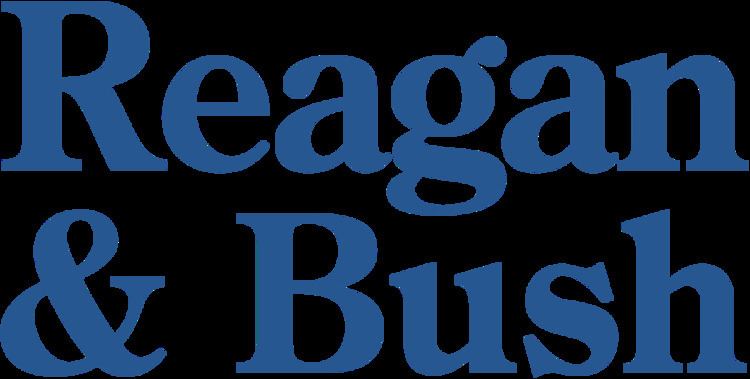Affiliation Republican Party | ||
 | ||
Campaign U.S. presidential election, 1980 Candidate Ronald Reagan
33rd Governor of California
(1967–1975) Status Won election, November 4, 1980 Key people George H. W. Bush
(Vice Presidential nominee)
William J. Casey (Manager)
Edwin Meese III (Chief of Staff)
Richard V. Allen (Foreign Policy Adviser) Slogan Let's Make America Great Again
Are You Better Off Than You Were Four Years Ago? | ||
Ronald Reagan, the 33rd Governor of California (served 1967–1975), announced his candidacy for President of the United States in New York City on November 13, 1979. On July 17, 1980, he became the nominee of the Republican Party for the 1980 presidential election. After receiving the Republican nomination, he selected one of his opponents in the primary elections, George H. W. Bush, to be his running mate.
Contents
- Primaries
- End of the primaries
- Vice Presidential selection
- Republican National Convention
- Opinion polling
- Political positions
- References
On November 4, 1980, Reagan carried 44 states and received 489 electoral votes to win the election. Jimmy Carter, the incumbent president, carried six states, as well as Washington, D.C., and received 49 electoral votes. Reagan won 50.7 percent of the popular vote, Carter took 41 percent, and Independent John B. Anderson (a liberal Republican) received 6.7 percent. Reagan's election as President was completed with the meeting of the Electoral College on December 15, 1980, and with the subsequent certification of the college's vote by the Joint session of Congress on January 6, 1981.
Primaries
Reagan announced his candidacy for President of the United States in New York City on November 13, 1979.
End of the primaries
On May 20, 1980, after the Michigan and Oregon primaries, Ronald Reagan secured enough delegates to clinch the nomination for the Republican Party. His opponent in the general election, incumbent President Jimmy Carter, passed the delegate threshold to become the presumptive nominee of his party on June 3. On May 26, George H. W. Bush, Reagan's remaining opponent for the Republican nomination, conceded defeat and urged his supporters to back Reagan.
Vice Presidential selection
Ronald Reagan's choice for vice presidential running mate had been a subject of speculation since the end of the primaries. When former President Gerald Ford revealed in a CBS interview with Walter Cronkite that he was seriously considering the vice presidency, Ford garnered a great deal of interest. However, after Ford suggested the possibility of a "co-presidency" and, in addition, insisted that Henry Kissinger be re-appointed as Secretary of State and that Alan Greenspan be appointed as Secretary of the Treasury, negotiations to form a Reagan-Ford ticket ceased. Less than twenty-four hours before Reagan had formally accepted the Republican nomination, he telephoned George H. W. Bush to inform Bush of his intent to nominate him. The following day, on July 17—the final day of the Republican National Convention—Reagan officially announced Bush as his running mate.
Republican National Convention
The 1980 Republican National Convention convened at Joe Louis Arena in Detroit, Michigan. Reagan accepted the Republican nomination on the final day of the convention:
"With a deep awareness of the responsibility conferred by your trust, I accept your nomination for the presidency of the United States. I do so with deep gratitude, and I think also I might interject on behalf of all of us, our thanks to Detroit and the people of Michigan and to this city for the warm hospitality they have shown. And I thank you for your wholehearted response to my recommendation in regard to George Bush as a candidate for vice president."
Opinion polling
Weeks before the election, Reagan trailed Carter in most polls. In the Gallup poll on October 26, Jimmy Carter was at 47 percent and Ronald Reagan at 39 percent. Following his sole debate with President Carter on October 28, Reagan overcame the largest deficit since Gallup polling began in 1936, and within one week, the Associated Press reported that the race was "too close to call". Three weeks before the election, Yankelovich, Skelly and White produced a survey of 1,632 registered voters showing the race almost dead even, as did a private survey by Caddell. Two weeks later, a survey by CBS News and the New York Times showed a similar situation. Although some pollsters reported a slight Reagan lead, ABC News-Harris surveys consistently gave Reagan a lead of a few points until the climactic last week of October.
Political positions
The United States in the 1970s underwent "stagflation"—a wrenching period of low economic growth, high inflation and high interest rates and intermittent energy crises. Reagan was an adherent of supply-side economics, which argues that economic growth can be most effectively created using incentives for people to produce (supply) goods and services, such as adjusting income tax and capital gains tax rates. Accordingly, Reagan promised an economic revival that would affect all sectors of the population. Reagan theorized that cutting tax rates would actually increase tax revenues because the lower rates would cause people to work harder as they would be able to keep more of their money.
Reagan called for a drastic cut in "big government" and pledged to deliver a balanced budget for the first time since 1969. In the primaries, Bush famously called Reagan's economic policy "voodoo economics" because it promised to lower taxes and increase revenues at the same time.
